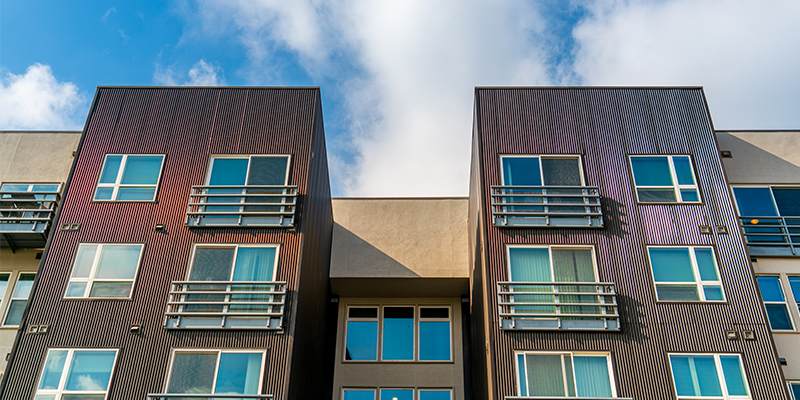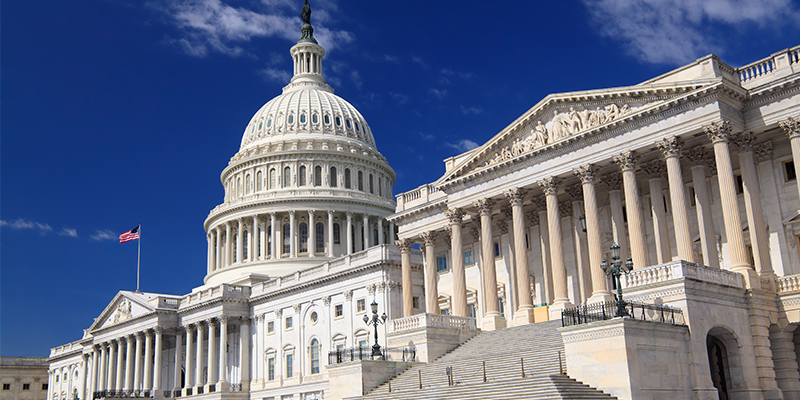By Kathryn Hamilton, CAE
NAIOP and commercial real estate leaders are closely watching a landscape shaped by tax policy, energy debates, tariffs and political dynamics. NAIOP’s priority issues have been front and center this year, offering both victories and challenges for the industry.
“One of the biggest fights this year was the renewal of the Tax Cuts and Jobs Act of 2017,” said Aquiles Suarez, NAIOP senior vice president for government affairs in a special session at I.CON Cold Storage. With critical provisions set to expire, NAIOP’s legislative team actively worked to safeguard capital gains rates, Section 1031 like-kind exchanges, bonus depreciation, the 20% pass-through deduction, opportunity zones, and the estate tax.
“These provisions are more than just numbers on a page. We know they drive real decisions for developers, investors and communities,” Suarez said. The association focused on ensuring that these aspects remained unchanged, knowing that alterations could significantly affect project feasibility and investment strategies.
A major legislative victory came with the passing of what President Donald Trump dubbed the “One Big Beautiful Bill.” For the CRE sector, the results were significant. Key issues were included and – most importantly – made permanent, including 100% bonus depreciation extension, preserving the pass-through deduction, reauthorizing opportunity zones, and maintaining the estate tax exemption.
Equally important was the industry’s success in preventing harmful provisions from taking hold. “We kept the state and local tax deduction from being eliminated for businesses, defended Section 1031 exchanges, and ensured carried interests continued to be treated as capital gains,” Suarez said. NAIOP also lobbied to protect foreign investment by addressing proposed retaliatory taxes that could have discouraged international participation in U.S. real estate.
Beyond tax issues, energy policy has emerged as a pressing concern. With data centers and large-scale developments consuming substantial electricity, the debate over renewable energy, fossil fuels and nuclear power carries significant implications. “It’s not just about generation – it’s about transmission and distribution,” Suarez emphasized, citing the challenges of delivering power across state lines to fuel economic growth.
The unpredictable nature of tariffs has further complicated the landscape. The sudden imposition of steel and aluminum tariffs has raised construction costs, affecting everything from building materials to specialized cold storage equipment. “You see these announcements, and there’s a lot of uncertainty about whether they’ll stick, how they’ll be enforced, and what the broader impact will be on pricing,” Suarez explained, noting that the association continues to engage with policymakers on the matter although tariff policy remains largely within the executive branch’s control.
Housing and underutilized office buildings are another area of focus. With mortgage rates high and inventory limited, NAIOP has played a substantial role in Congress exploring incentives to convert idle office space into residential units. “A little federal incentive might help unlock housing supply, though real progress will take time,” Suarez said. Lower interest rates could also spur market activity, but long-term solutions will require structural reforms, including permitting adjustments and tax considerations for capital gains.
Looking ahead, the midterm elections loom as a critical variable in shaping future policy. The House is narrowly divided, with just a handful of seats potentially shifting control, while the Senate remains slightly Republican leaning. These dynamics will influence how legislation is negotiated and enacted, including potential energy, tax and infrastructure measures. “No matter who wins, the race for 2028 is on everyone’s mind,” Suarez noted.
While the association has achieved meaningful victories this year, challenges remain. Defending CRE interests against unpredictable tariffs, navigating polarized energy debates, and managing the implications of demographic and economic shifts all require careful advocacy. “Stability and predictability are everything in our business. When Congress made these provisions permanent, they gave us the high ground going forward, but the work doesn’t stop here,” Suarez said.
In a complex environment of evolving legislation, international trade tensions and market uncertainty, the commercial real estate industry continues to adapt. Through targeted advocacy and strategic engagement, leaders aim to protect the sector’s growth, ensure investment incentives remain intact and address critical infrastructure and housing needs.
“We’re focused on the issues that matter most to our members – from tax policy to energy access to housing supply. It’s about giving developers, investors and communities the certainty they need to thrive,” Suarez concluded.








